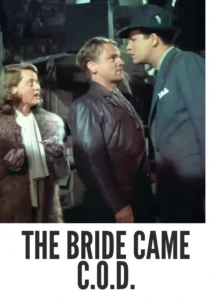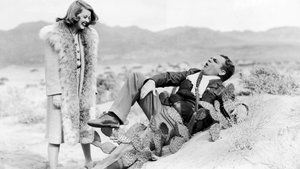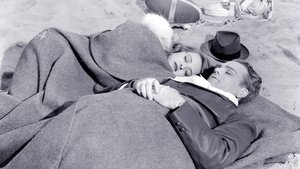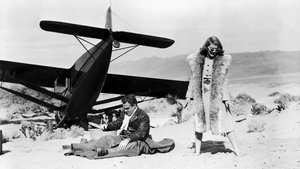Video Sources 0 Views

Synopsis
Madcap Mayhem and a Runaway Bride: The Bride Came C.O.D. (1941) in Stunning Color

Dive into the delightful zaniness of The Bride Came C.O.D., a riotous romantic comedy from 1941, now beautifully colorized for a viewing experience that pops! Starring the dynamic duo of James Cagney and Bette Davis, this film offers a hilarious take on a runaway bride, a determined pilot, and a whole lot of trouble in the desert. Perfect for fans of classic comedies and those looking for a lighthearted escape, this HD download brings a touch of old Hollywood glamour to your screen. Also known as Mail Bride, this film delivers non-stop laughs and memorable performances.
The Bride Came C.O.D. Storyline: A Kidnapping Caper
The Bride Came C.O.D. tells the story of Joan Winfield (Bette Davis), a headstrong heiress who elopes to Las Vegas to marry bandleader Allen Brice (Jack Carson), much to the dismay of her millionaire father. However, before they can tie the knot, pilot Steve Collins (James Cagney) swoops in and kidnaps Joan, whisking her away to a deserted ghost town in the middle of the Arizona desert.Hired by Joan’s father to prevent the wedding, Steve’s plan is to keep her stranded until her father arrives. However, things don’t go as planned when Allen, along with a persistent reporter, gives chase, leading to a series of comical mishaps and romantic entanglements. As Joan and Steve spend more time together, sparks fly, and she begins to question her feelings for Allen. The Bride Came C.O.D. is a fast-paced, screwball comedy filled with witty banter, slapstick humor, and plenty of heart.
Movie Cast
The film boasts a stellar cast, bringing these comedic characters to life:
- James Cagney as Steve Collins
- Bette Davis as Joan Winfield
- Jack Carson as Allen Brice
- George Tobias as Tony
- Eugene Pallette as Lucius K. Winfield
Movie Genre
The Bride Came C.O.D. is a romantic comedy, with elements of screwball that are characteristic of the era. Its zany plot, witty dialogue, and farcical situations make it a delightful and entertaining film.
Historical Context: Golden Age of Hollywood Comedy
Released in 1941, The Bride Came C.O.D. exemplifies the Golden Age of Hollywood comedy, a period known for its witty banter, farcical situations, and charismatic stars. The film reflects the era’s emphasis on lighthearted entertainment and escapism during a time of global turmoil. The Bride Came C.O.D. showcases the comedic talents of James Cagney and Bette Davis, demonstrating their versatility beyond their more dramatic roles.
Colorization Details
This colorized version of The Bride Came C.O.D. has been meticulously restored using modern digital techniques, enhancing the visual appeal while preserving the film’s original comedic charm. The colorization process involved carefully analyzing the grayscale tones of the original black and white footage and assigning appropriate colors to each scene. This painstaking process brings new life to the characters and settings, making the story even more engaging for modern audiences. While some may debate the merits of colorizing classic films, it introduces these films to a broader audience, ensuring their legacy for future generations.
Technical Details
- Director: William Keighley
- Screenplay: Jerry Wald, Julius J. Epstein
- Story: Kenneth Earl, M. M. Musselman
- Cinematography: Ernest Haller
- Edited by: Thomas Richards
- Production Company: Warner Bros. Pictures
- Distributed by: Warner Bros. Pictures
- Runtime: 92 minutes
Technical Specifications
- Download Format: MP4
- Resolution: HD (1080p)
- Compatibility: Compatible with most devices, including smartphones, tablets, computers, and smart TVs.
Reviews and Critical Reception
The Bride Came C.O.D. (1941) is celebrated for its fast-paced humor and the sparkling chemistry between James Cagney and Bette Davis. While not always considered a top-tier classic, it remains a beloved and highly entertaining example of Hollywood’s Golden Age, showcasing the comedic talents of its stars.
FAQs
- Q: What is The Bride Came C.O.D. about?
- A: The Bride Came C.O.D. is a romantic comedy about a pilot who kidnaps a runaway bride to prevent her marriage, leading to a series of comical mishaps.
- Q: What makes The Bride Came C.O.D. interesting for classic film fans?
- A: The Bride Came C.O.D. offers a glimpse into the Golden Age of Hollywood comedy, showcasing the talents of James Cagney and Bette Davis in a lighthearted and entertaining film.
- Q: Is this version of The Bride Came C.O.D. colorized?
- A: Yes, this version has been professionally colorized to enhance the viewing experience.
- Q: What is the download format?
- A: The download format is MP4, which is compatible with most devices.
- Q: What resolution is the download?
- A: The resolution is HD (1080p), providing a high-quality viewing experience.
Download Now in HD!
Watch The Bride Came C.O.D. Today!














